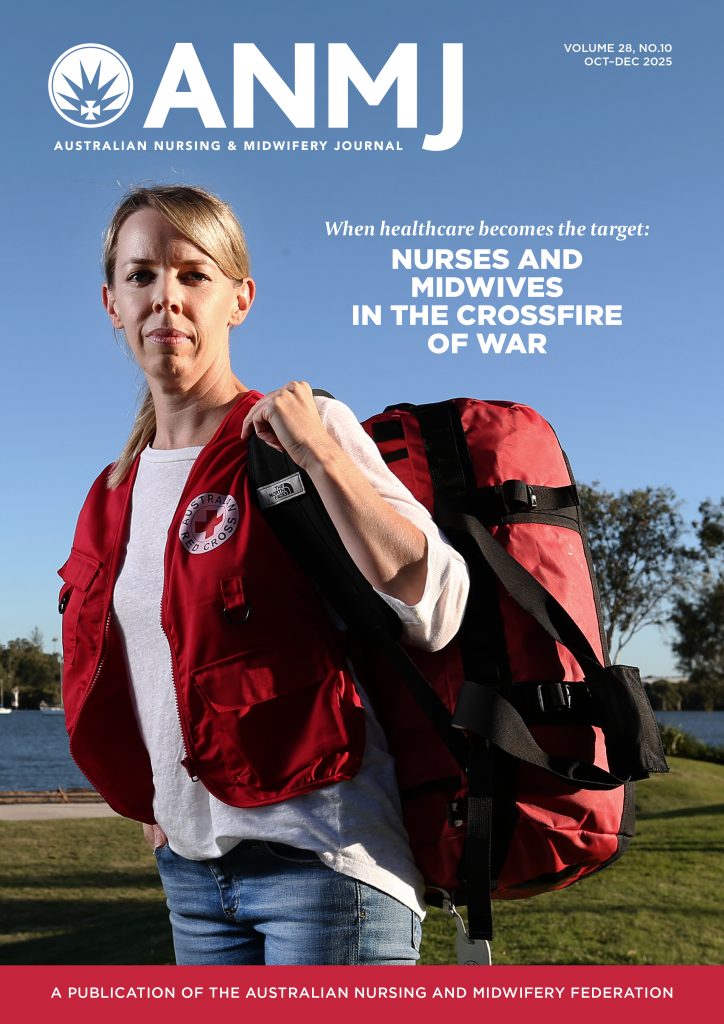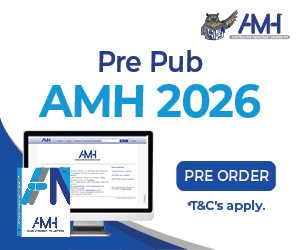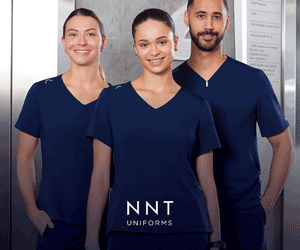As part of their education, nursing students at the University of Adelaide gain hands-on experience through life-like mannikins that display all the signs and responses of real people and actors employed as standardised patients who portray health problems.
The university’s state-of-the-art simulation lab, Adelaide Health Simulation (AHS), replicates hospital suites with resuscitation, neonatal and anaesthetic equipment to deliver innovative learning to the next generation of health professionals.
The simulation facility includes several rooms set up to look like a typical hospital ward, including the same beds and fully functional call bells.
Other equipment includes scrub sinks and rooms that can be adapted to resemble emergency department resuscitation rooms or theatres.
Large store rooms stock fake blood bags, intravenous (IV) lines and gear for catheter insertions.
Mannikins range from infants to pregnant women and adults, with some having the capacity to have their pulse checked, blood taken and even give birth with the touch of a button.
Final year nursing student Amy Wells was first exposed to the facility during her second week of the degree and its real-world clinical scenarios became the norm through weekly practical classes such as CPR and manual handling, working collaboratively with medical students in simulated situations, and undertaking exams.
“When you first speak to a mannikin it’s a bit of a weird feeling,” Amy says.
“You’re a bit on edge and you don’t know what it’s going to be like but I feel they’re so important to use in the degree because it’s something you can practice on before interacting with the real thing.”
Amy says dealing with actors depicting realistic injuries adds another dimension.
“Last week we had a situation in our perioperative class on situational awareness, where we were learning to de-escalate scenarios with real actors. In this particular scenario we were briefed that this patient was particularly anxious and required his pre-operative checklist to be completed.
“However, during the scenario, I was called to the door where a fellow nurse told us that the surgery was cancelled, which resulted in us having to explain this to the patient. This caused the actor to escalate quickly, jolting out of bed, pacing and yelling at us. It was pretty eye-opening, so we quickly had to use the de-escalation techniques we had learnt in the lectures that week.”
In other scenarios, Amy says child actors are brought into the lab for paediatric classes so students can conduct observations.
“We were practising performing observations on children aged from 0-5, which was really important because children don’t cooperate in the same way that peadiatric mannikins do, so we had to adapt our approach in order to be successful.”
Amy says the simulation lab has been crucial to her growth and education because it has allowed her to develop her skills and confidence in a realistic environment before putting them into practice working clinically.
She says one of her recent clinical placements, at the Royal Adelaide Hospital within theatre nursing, contained scrub sinks identical to the ones found in the lab.
Similarly, skills she has learned in the simulation lab have come in handy in real-life situations such as showering patients, inserting catheters, resolving family conflicts and assessing patients experiencing mental illness.
“I’ve just found that I’m more confident knowing that I’ve already practised it in the lab whether that be a mannikin or an actor. I feel like it just gives you a bit of a boost of confidence. It’s not like learning in a lecture.
“Every time I start a clinical placement and when I learn a new skill I automatically think back to the scenario in the clinical skill lab. It’s really prepared me for any situation I’m faced with.”








